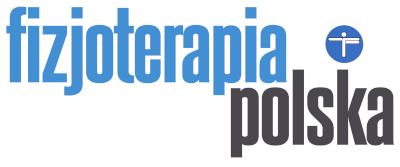The application of laser biostimulation in the treatment of maxillary and frontal sinuses
Beata Ufniak, Jerzy Przybylski, Zbigniew Śliwiński, Zdzisław Zagrobelny
Beata Ufniak, Jerzy Przybylski, Zbigniew Śliwiński, Zdzisław Zagrobelny – The application of laser biostimulation in the treatment of maxillary and frontal sinuses. Fizjoterapia Polska 2001; 1(4); 346-353
Abstract
Background. This article describes the application of laser biostimulation in the treatment of maxillary and frontal sinusitis. The symptoms of the disease are described, along with the treatment protocols for both acute and chronic sinusitis. The article also describes the operating principles of laser radiation and the exposure techniques, which the authors have divided into two types: contact and non-contact. Material and methods. Our research involved 50 patients, 30 with maxillary sinusitis and 20 with frontal sinusitis, who had previously been treated only pharmacologically. The laser used in therapy was an LBK 2 apparatus manufactured by Amber, which emits invisible radiation with a wavelength of 980 nm and a power density of 35 mW/cm2. The radiation dose did not exceed 5 J/cm2. Treatment was administered in two stages. The first included 10 procedures, while the second began after a 2-3 week break, and included 3-6 procedures (once every two days). Of the 50 patients who commenced laser therapy, 20 had very severe symptoms, 20 had severe symptoms, and 8 had mild symptoms. Results. 86% of the patients completed treatment with excellent results, i.e. disappearance of edema and inflammatory exudates, remission of inflammation, and subsidence of pain. 12% of the patients reported good results, i.e. incomplete remission of symptoms. 2% of the patients finished treatment without any reaction. Conclusions. Laser therapy is effective in the majority of cases of maxillary and frontal sinusitis, in both acute and chronic forms, eliminating edema, pain, and inflammation of the mucous membrane of the nose. Laser biostimulation can be more effective in some cases than pharmacological treatment, and in combination with other physical agents gives excellent therapeutic outcomes in the treatment of laryngological patients.
Key words:
acute sinositis, chronic sinusitis, infrared light, therapeutic dose, laser contraindications, contact and non-contract laser procedures
| Invalid download ID. | Pobierz bezpłatnie artykuł w j. angielskim |

